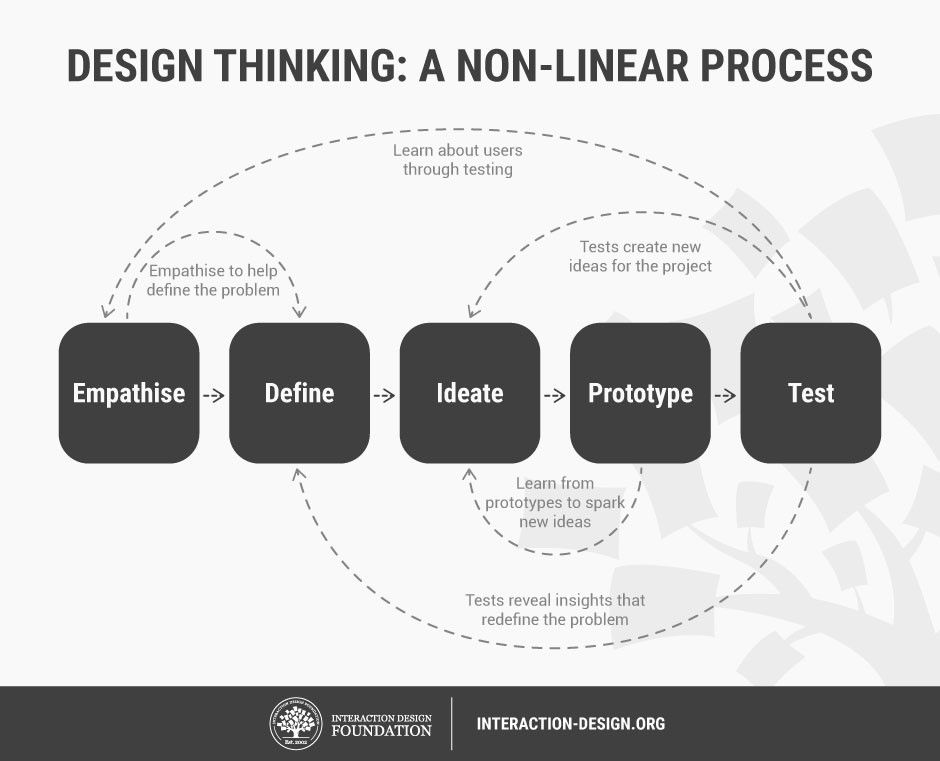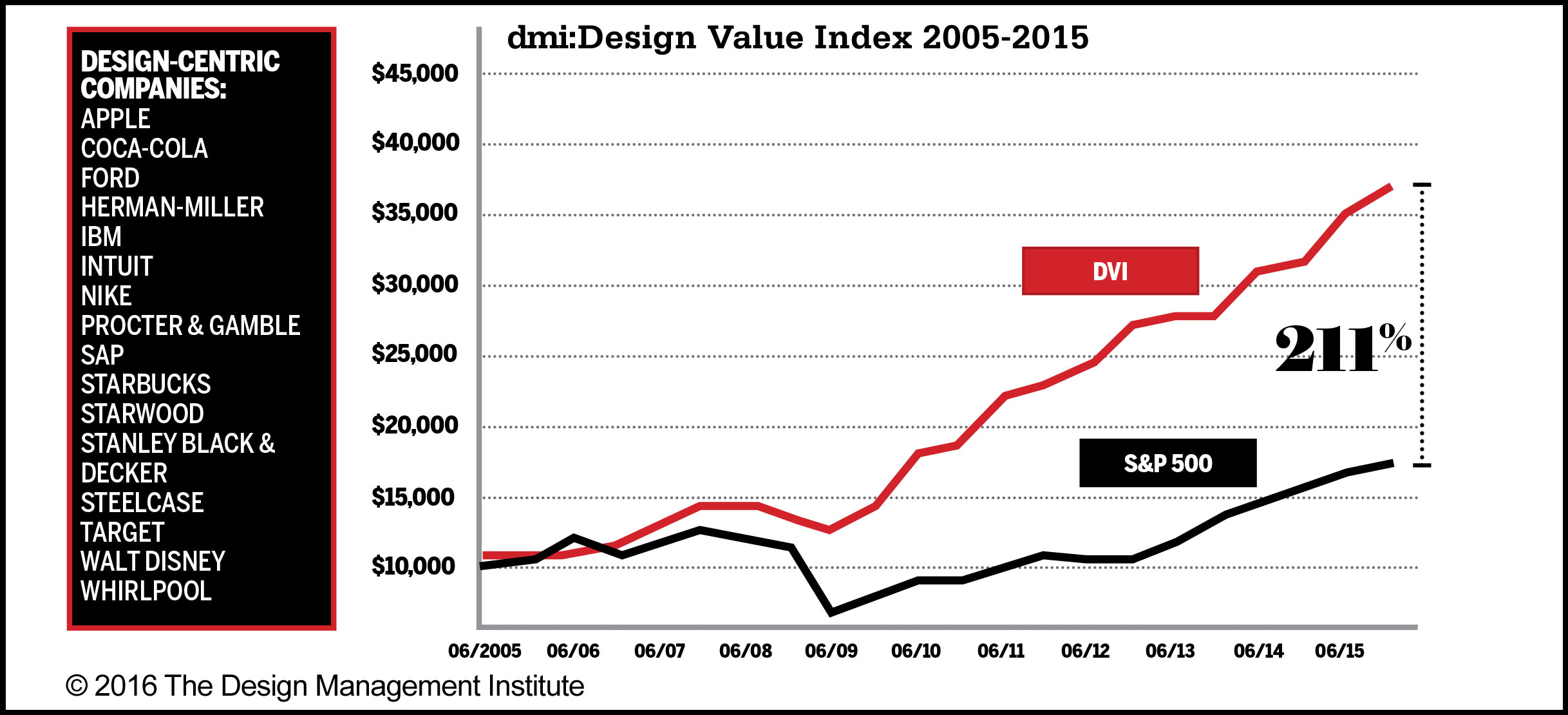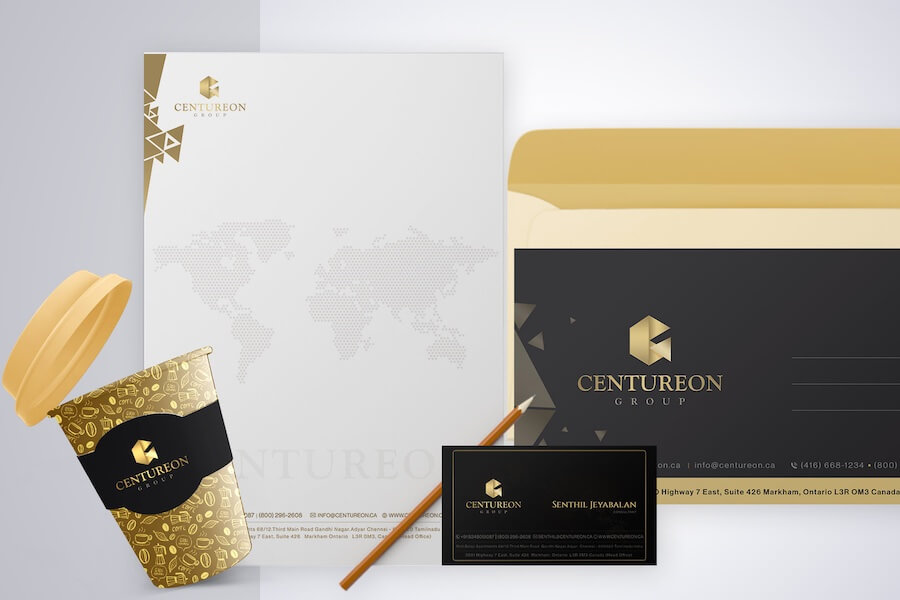Design 101: What Is Design Thinking And How Can You Use It?
Why are Apple products so popular, even with people who don’t actually use them? What made loyal users switch from iOS to Android when it launched?
These products changed their industry landscape with just one genius idea.

For a business owner and creator, these events are inspirational and intimidating too. They show customers are open to change if a company cracks the code to what they want.
But, how do you do that? Is it a stroke of genius only, or is there a method to the madness?
We know how it feels to ponder these questions every day and not know what to do to make your brand stand out from your competitors.
It so happens that we might have an answer to all the questions that are troubling you. And it is “Design Thinking”.
The popularity of this concept and approach with businesses such as Apple, Samsung, IBM, and Google has made this an essential mindset for entrepreneurs. In fact, top universities have active courses on Design Thinking.
But don’t worry, you don’t have to work at these companies or go back to school to understand Design Thinking.
Kimp brings you a detailed overview and practical applications of this most-coveted skillset.
Let’s get started.

What exactly is Design Thinking?
Often the articles, movies, and books we read about creativity and the creative process glorify the role of inspiration. Aka the magical “hallelujah” moment where the creator has an epiphany and just knows what customers need.
In reality, this process is full of experimentation, research, and endless meetings with copious amounts of coffee.
Design thinking lays down a structure to this madness to ensure that the product or process development does not rely on a single person’s approach. Instead it becomes the default for a business.
So, what is this all-important design thinking? How is it different from problem-solving or just design?
Design thinking is a school of thought that focuses on human-centered design. It’s a process that encourages engineers and innovators to think from a designer’s perspective.
It is not a one-size-fits-all solution. It is actually a way of life. Creators and engineers working with Design Thinking spend their time thinking from the user’s perspective and are willing to go back to the drawing table until they solve a problem practically.
Design Thinking principles
User-Centric Design
Iterative Process
Collaboration
Design Thinking in a nutshell is a way of designing that puts the customers’ needs first and solves them. The key is to be daring and attempt issues no one has paid attention to date.
Design thinking has three cornerstones or principles that truly display what it means to follow this method..
User-Centric Design
This is, by and large, the foundation of design thinking. Right from identifying the problem to finding a solution, design thinking always puts the user’s needs first. A product that can solve a persistent pain for the customer must take precedence over a product that is an upgrade to an existing solution.
Iterative Process
Epiphanies and hallelujah moments are often the starting points of the creative process rather than the finish line. Designers, innovators, and engineers must be willing to go back to the drawing board, run A/B tests, and tweak until it is what the customers want. Maybe this is what Steve Jobs meant when he said, “Stay Hungry. Stay Foolish”.
To achieve greatness through design thinking, you can’t stop at the first two attempts. Iterations are your friend.
Collaboration
If you want to build a product that solves a user’s problem, is inclusive, and adequately addresses all the user pain points, you need different voices at the table.
Design thinking is human-centered problem-solving. And that means all humans. Also, to build a workable solution from start to finish, you need collaboration between experts from different disciplines.
For example, you cannot build an inclusive UI without the back-end integration in place. It’s as simple as that. Collaboration makes design thinking efficient and fruitful.
The Design Thinking Process

The image above by the Interaction Design Foundation depicts the design thinking process. The five steps (not sequential as in he image) in Design thinking include:
Empathize
Empathy is an under-rated emotion, especially for businesses and marketers. Understanding user requirements cannot be on a superficial level. Your customers influence your business growth, and to make your products or services better for them, you must empathize with their problem statement before looking for a solution.
Define
The first step to finding the solution for user pain is to define the problem statement clearly. Yes, the customer is not happy with your website, and they want a better experience. This problem statement could mean anything from landing page to speed to even bad CTA. Zero in on the problem and define it clearly to get to the solution quicker.
Ideate
After confirming the problem statement, it is now time to use the pillar of collaboration and move to ideating. The ideation stage is for brainstorming, listening to different perspectives, and deep-diving into the problem. Remember, perfection at this stage can be a roadblock to the solution. Develop a scalable working model and move on to testing.
Prototype
The prototyping stage is necessary to let the idea out and begin testing. Ideally, you must build a low-resolution prototype to test and not spend a lot of time and effort at this preliminary stage.
Test
Test the idea in public, listen to focus groups, and keep the feedback loop open. The test results should:
- Take you back to the ideation stage with a renewed perspective
- Help you define the problem statement with better accuracy
- Improve your empathy for the customer’s pain based on their feedback
In addition to these steps, recording feedback and continuing with iteration brings perfection to product development.
With every iteration, design thinking gives you a better understanding of the problem statement and brings you one step closer to the ideal solution.
Why do you need a Design Thinking Approach for your business?
As a business owner, are you still perplexed as to how this will have a concrete effect on your brand? And your bottom line? We get it. Yes, customer satisfaction is an important incentive. But hey, it is still a business at the end of the day.
So, how does the design thinking approach help your business?
Makes Innovation easier
Brands have entire departments dedicated to launching new services and products to capture new markets. And others dedicated to staying relevant in their industry, gaining a competitive edge in the market and keeping revenue streams healthy. Imagine if there was a way to automate this? If there was a blueprint that ensures quality ideas and actionable solutions?
It would save you money, time, and a lot of resources so that you can channel them into data-backed ideas. That’s what design thinking does for your business.
Streamlines your processes
Operations are a pain for every brand – irrespective of the size of the business. Managing different verticals, handling customer queries, and ensuring that every product launch hits the mark is a monumental task.
Use design thinking to create a framework where there are no personal factors and every step is evidence-backed. Remove the day-to-day management model for something that works irrespective of what the product is with design thinking.
Improves ROI
As a brand, you invest time, effort, and creativity into developing products and solutions for customers. With the conventional method of problem-solving, your only option is to choose a design and hope it works. That is not exactly a fail-proof model.
With design thinking, the team spends considerable time understanding the problem, perfecting the solution with adequate tests and analysis. So, when you eventually launch in the market, you know it will work. Or you won’t launch, thereby saving your investment.
Design thinking is a great way to improve your ROI.

Companies with design thinking methodology in place outperformed the S&P 500 by over 200% from 2005 to 2015.
Using Design Thinking to promote your business
The beauty of the design thinking approach is that it does not confine itself to one field. Design thinking is advantageous in everyday life and almost every function in your business.
So let’s discuss the impact of design thinking on one of the most important aspects of your business – marketing.
Every business has to invest in marketing, advertising, and brand building to stand out in the market and garner a following that stands the test of time. Even if you outsource this arm of your business and do not go heavy on paid promotions, you still need design thinking.
Why? Let’s take a look.
Designing Branding
How you want your customers to perceive you, understand you, and connect with you depends on your branding. Branding goes way beyond your visual identity or branding design. It defines who you are to your customer.
To establish a successful brand that customers find indispensable in their lives, you must understand what you bring to the table and why the customer needs you.
The clarity in value proposition, mission & vision statement, and market positioning goes a long way in formulating branding for your business.
With the Design Thinking approach, you can:
- Understand customers’ needs in detail and position yourself strategically
- Run iterations of different designs and check what resonates with your target demographic
- Create intuitive and personalized solutions, and branding, for niche user bases and outrank your competition
- Launch a brand identity and visual identity that resonates deeply with your target audience.
You cannot and should not finalize a product branding or your business’s brand identity overnight. It takes time, effort, and iterations to create something that will work.
You should build in public, but test in private. Use focus groups, online communities, and feedback loops to finesse your brand.
With Kimp as your design partner, you have a design team willing to put in the effort to bring the best results out. Our flat-rate design subscriptions give you the freedom to experiment and only finesse your branding based on the feedback you get.

Designing Ads
Online and offline advertising is getting more expensive by the day. So you need to make sure that you are thoughtful and strategically approaching your ads to get good ROIs. Safeguard your investments in your ad campaigns by employing design thinking in your ad designs.
Let’s consider a scenario. Maybe you run a business that helps people simplify their workflows. You want to target IT firms and other large corporations on one platform and target small businesses on another platform.
This is an excellent technique, given that the demographic on each social media platform is unique in its own way. But, are you also designing different ads for these platforms? How do you know what will attract these two customer sets?
Yes, you can conduct market research, but if you rightly want the ads to give you their money’s worth, you need design thinking.
Empathizing with the user, defining their problem, and then ideating on what the customer is looking for, is the path to creating an ad that sells.

Advertisements need two things:
- Problem statement – to attract the customer and make them listen to you
- Clear solution – to gain trust and make the customer begin their journey with you
Design thinking gives you both.
So, design thinking helps you craft better advertisements, improve your conversation rates, and improve your ROI. It’s a triple threat.

Kimp Tip: Don’t constrain yourself to express the problems and solutions via text alone. Visual mediums are highly effective. Choose to employ the power of images and videos to improve your advertisements.
Need help creating these creatives? Try out a Kimp Graphics, Kimp Video, or Kimp Graphics+Video subscription for free, for 7 days. Start your trial here.
Web Design

The design above clearly addresses client concerns with the brand promises of “exceptional personal care” that is “on time” and the right colors, and imagery to attract clientele.
Why is this so important? Well, nothing kills a business faster than a poor website. A website in the current digital world is more than a gateway for a customer to get the details about your business. It is a metric by which they evaluate the authenticity and standards of your brand.
And it takes less than 15 seconds for a customer to lose interest in your website. So, everything right from your sliders to your product images to your icons and CTAs must impart value to retain their interest. This is even more so important for a landing page design.

Your website and landing page designs are critical to your business and lead management activities. You must tailor them exactly to what your customer is looking for. How? With design thinking, of course.
Let’s take the previous example again. The workflow management software firm’s website must talk about the problem they are solving for customers.
Announce your solutions on your web pages and design them for an enhanced experience. This goes beyond just knowing what the customer wants in products to what they expect in customer experience too.
Are the customers looking for quick solutions or want to book a call with your team? Do they want to know more about you or understand the pricing structure?
Apply design thinking to all these areas to make your products and customer experience superior in your industry.
Kimp – A design company that gets Design Thinking
Customer experience is our priority always. We want to delight our customers with creative solutions and approaches to their problems.
We also want your customers to feel the same way about you. Your graphics and videos have a far-reaching impact on your marketing campaigns. And so we offer design subscriptions built to support you through all of the iterations and A/B testing you need.
Sign up for the free trial today to see how our design team approaches your design briefs. And see what design thinking can do for your brand!